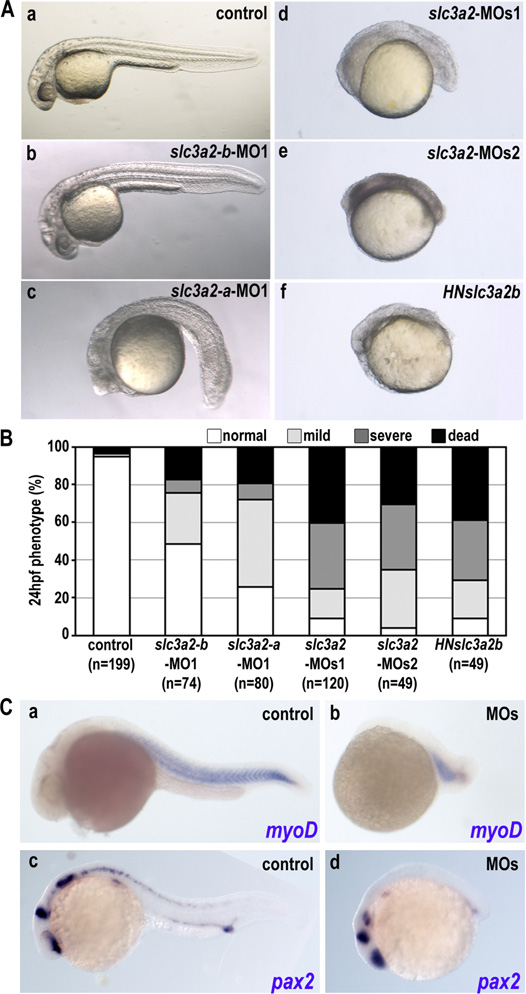Fig. S2
Loss of function of Slc3a2 induces morphological defects but does not affect patterning. (A) Morphological phenotypes caused by slc3a2 knockdown. (a) Control embryo. (b-e) Morphant embryo injected with slc3a2-b-MO1 (b); slc3a2-a-MO1 (c); a combination of slc3a2-a-MO1 and slc3a2-b-MO1 (slc3a2-MOs1) (d); or a combination of slc3a2-a-MO2 and slc3a2-b-MO2 (slc3a2-MOs2) (e). (f) Embryo overexpressing HN-slc3a2-b (HNslc3a2b) (Material and Methods). Single gene knockdown by morpholino causes mild phenotypes (b and c), whereas double knockdown of both slc3a2-a and slc3a2–b by a set of MO1 or MO2 (d and e) or overexpression of HN-slc3a2-b (f) induces severe morphological defects with a smaller head and shorter tail. Images are 1-day-old embryos. (B) Phenotypes at 24 h postfertilization were categorized as normal (white), mild (light gray), severe (small head and short body axis) (dark gray), or dead (black). Representatives of mild and severe phenotypes in morphants are shown in Fig. 1B. Data shown are from three experiments, and the total number of embryos is shown below each bar. (C) Whole-mount in situ analyses for MyoD (a and b) and pax2 (c and d) in control and slc3a2-morphants (MOs). Note that expression patterns of MyoD and pax2 are retained despite severe morphological changes.

